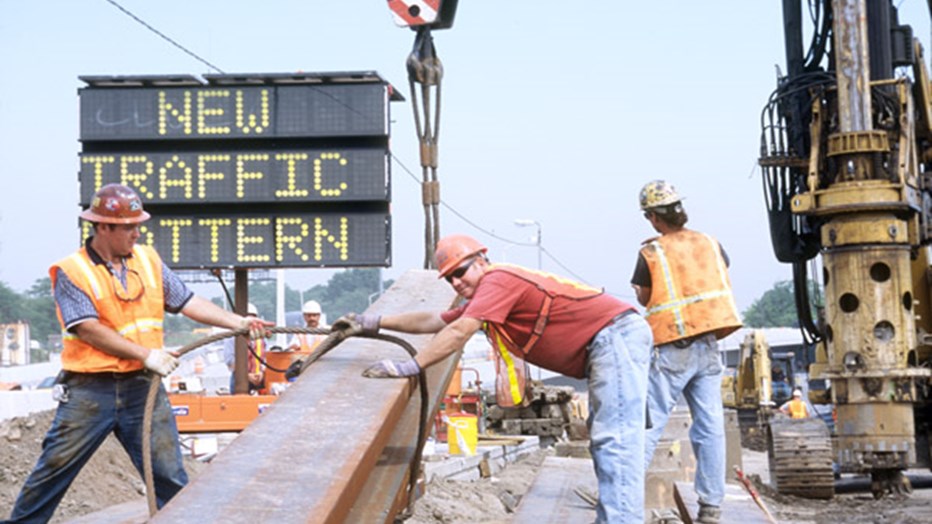The New York State Department of Transportation (NYS DOT) awarded Skanska USA Civil Northeast a $241 million contract to rehabilitate two miles of the Brooklyn-Queens Expressway in Queens, NY. The project encompassed reconstruction of roadway, ramps and overpass bridges and resurfacing and rehabilitation work on streets below the main structure, as well as reconstruction of the Grand Central Parkway Connector, which links the Brooklyn-Queens Expressway to the Parkway. Skanska USA Civil Northeast’s subsidiary, Underpinning & Foundation Skanska drilled augered soldier piles,cast-in-place concrete pipe piles and miscellaneous timber piles. Skanska Koch Skanska, a sister company, managed the super-structure steel procurement, fabrication and erection.
To improve safety conditions and smooth traffic flow, Skanska widened travel and shoulder lanes, aligned roadway and ramps to reduce curvature, and also upgraded drainage systems and other utilities. To accomplish this, workers had to demolish 19 bridges, construct 15 new road bridges and two railroad bridges, relocate sections of CSX railroad as well as install 18,000 linear feet of retaining walls. The new highway bridges utilize a mixture of wide flange steel girders, plate girders, trapezoidal box girders, and prestressed concrete box beams. The project was bisected by the CSX Railroad right of way. Three railroad bridges were demolished and replaced by a nine-span viaduct consisting of fabricated steel girders supported by box columns and cap beams. A fourth bridge was demolished and replaced by a longer three-span steel truss bridge over Northern Blvd, a major east-west artery running through Queens.
Bridge foundations were supported by driven piles, and reinforced concrete-filled drilled shafts ranging up to three meters diameter and 27 meters deep. Most of the retaining walls are supported by heavy wide-flange soldier beams socketed in concreted one-meter diameter drilled holes. The scope of work also required that the team lower the elevation of 34th and 35th Avenues, which runs transversely below portions of the Expressway. Reconstruction of 69th Street was also part of the effort. A challenging aspect of this project was New York State DOT’s requirement that all lanes on the Expressway remain open to vehicular traffic during rush hours. That condition required close coordination with local businesses, residents and New York City DOT, which issued permits for this project. This section of roadway is one of the most congested in the United States. There were numerous traffic stipulations governing the daily and nightly lane closures necessary to perform the work. At the same time, Skanska had to adhere to legal and contractual restrictions on noise and vibrations due to the residential neighborhoods adjoining a good portion of the site.



